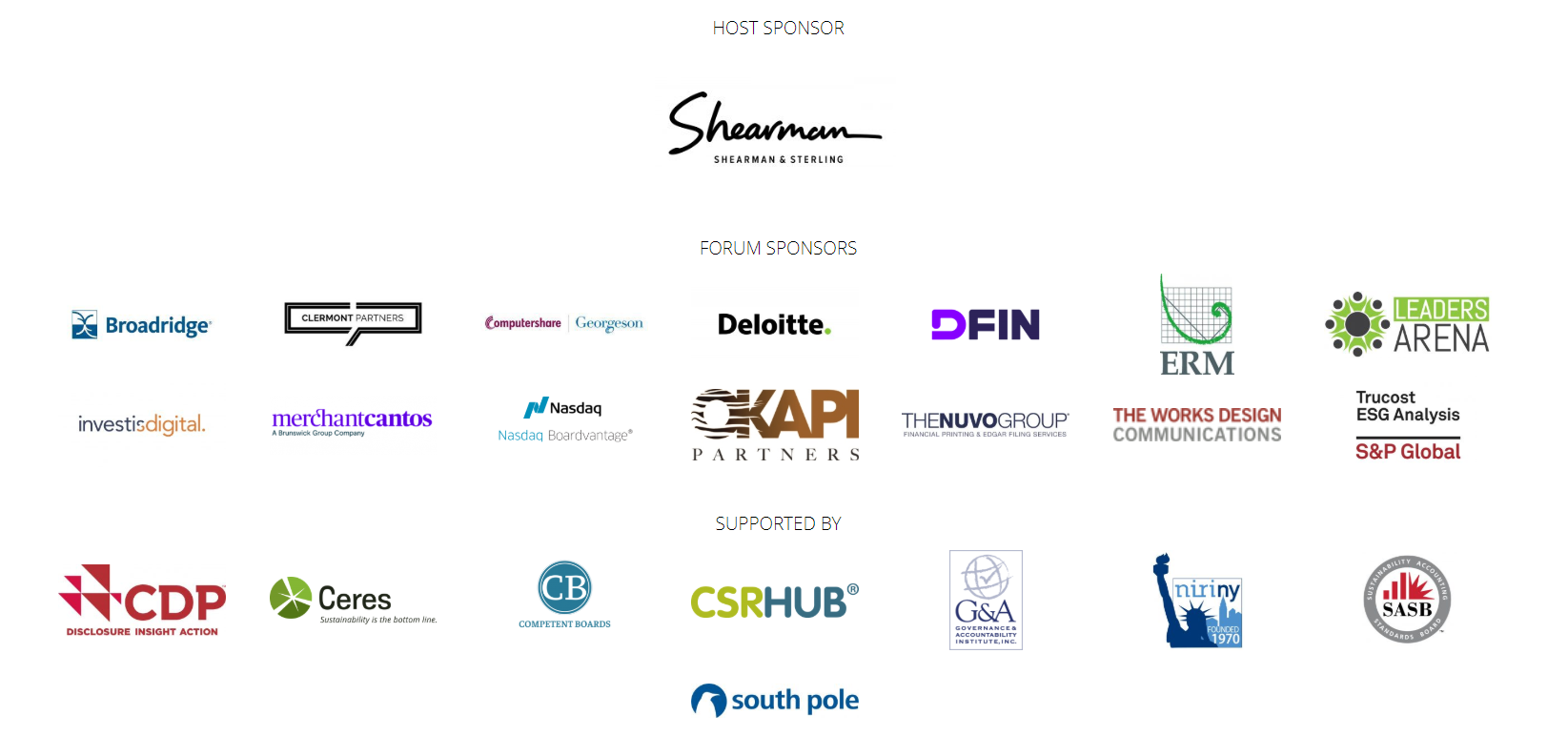The theme of this year’s ESG Integration Forum focused on moving beyond a discussion about ESG trends and toward positive action companies can take to own their ESG story.
The ESG Integration Forum brings together readers of IR Magazine and Corporate Secretary to discuss how they can further collaborate on effective ESG strategies. This year, it was notable that a large number of sustainability professionals were also in attendance.
Attendees were surveyed about their ESG priorities at the end of the day, and cross-functional collaboration was clearly on the minds of many audience members, as we’ll see in the answer to the three survey questions below.
Understanding ESG
The first question audience members were asked was what their top priority is, as it relates to developing a deeper understanding of ESG.
| Connect with the sustainability, investor relations and governance teams, and set up a working group to compare contacts and establish a dialogue on ESG issues | 41% |
| Contact the ESG and stewardship teams at your top 20 shareholders and arrange a meeting to discuss ESG-related risks | 18% |
| Survey your shareholders to understand their preferred ESG reporting frameworks and data sources | 12% |
|
Review sell-side broker, rating agency and SRI output on sustainability themes and your sector |
6% |
| Not sure | 23% |
One of the reasons the ESG Integration Forum exists is that the IR Magazine and Corporate Secretary editorial teams have observed that in many cases, the IR and governance professionals at the same company would speak to different people at the same investor and draw very different conclusions. It’s notable, therefore, that attendees walked away with an enhanced mandate for collaboration.
This is something Michael Wherley, director of investor relations at FMC, noted. ‘We have pretty limited resources – we’re a $10 bn market cap, but I’m a one-and-a-half-person IR team and the ESG team has three people,’ he explained. ‘We think about where to put our emphasis and how to get the data right.’
Planning and internal communications
The next audience question concerned how issuers should collaborate on ESG reporting and engagement. The results were as follows:
| Conduct an analysis of ESG disclosure by peer companies | 50% |
| Articulate strategy, tactics, desired outputs and measurement practices | 15% |
| Create an internal team document outlining the fundamental principles of ESG investing, the different strategies and how it applies to your company | 10% |
| Develop a way of gathering feedback or experience into a shared knowledge base about SRI and corporate governance | 10% |
| Identify structured opportunities to engage with investors and research providers | 10% |
| Assign responsibilities for content production, relationship management and communications | 5% |
| Define a process for recording investor/analyst contact going forward | 0% |
| Create a register of ESG/SRI interest | 0% |
| Characterize the extent of investor and sell-side firms’ interests in sustainability | 0% |
During the table workshop session, several attendees described how useful it had been for them to look at what information their investors are publishing. One small-cap investor relations professional commented that it’s particularly helpful, given that his firm may not have the resources to invest significantly in its own ESG reporting initiatives from scratch.
This was backed up by Ian Roe, director of sustainability at MerchantCantos, who chaired a table discussion about getting started on the ESG journey. He said the takeaway from the discussion was, once again, the need for cross-functional collaboration – especially for small caps.
Shaping your message and outreach
The final polling question put to the audience was about how issuers can think about owning their ESG message and use it to inform their shareholder engagements around ESG. The results were:
| Review investor expectations on key issues and what the company can deliver on these issues | 50% |
| Develop a suite of key messages and articulate them in presentation format | 21% |
| Assess investors’ data demands and conduct a data analysis with your company | 13% |
| Plan an ESG or governance roadshow | 8% |
| Organize a webcast for investors | 4% |
| Plan a half-yearly ESG-focused conference call with investors and analysts | 4% |
Speakers from Blackrock, Boston Trust Walden, Cornerstone Capital and the Canada Pension Plan Investment Board each explained that their firm publishes its thoughts on ESG on the company website. A clear takeaway from the event was that attendees would like to develop their understanding of their investors’ own ESG priorities. For passive investors, that’s likely to focus on long-term value creation and proxy voting; for active investors it may also focus on how ESG can influence buy, sell and hold decisions.
Regarding the responses that called for a focus on adding ESG elements to investor-facing presentations, Hope Mehlman, executive vice president and chief governance officer at Regions Financial, explained earlier in the day that she had added two ESG slides to the IR slide deck, ensuring that all investors would see how important the topic is to management.











